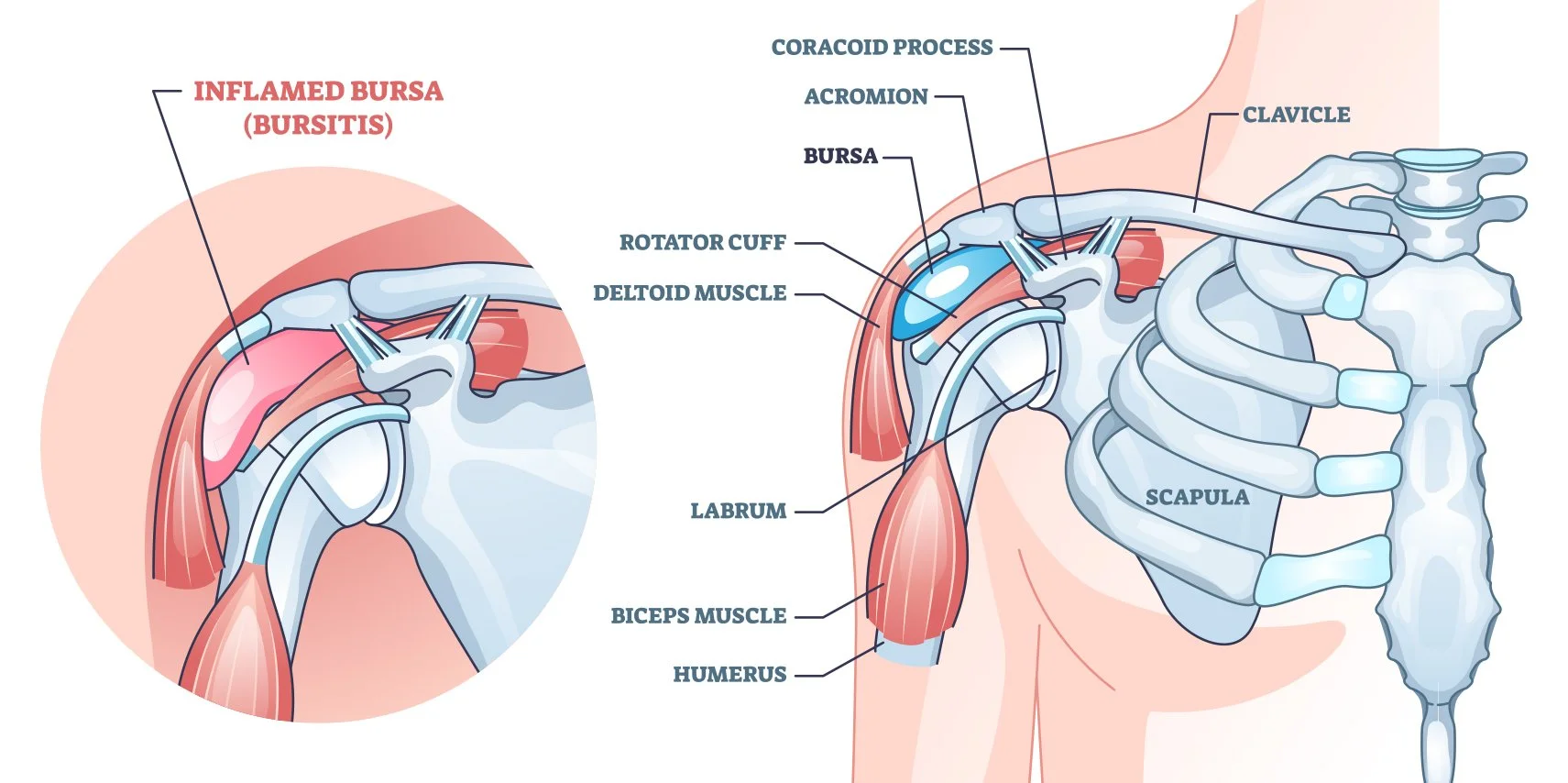Shoulder Pain – Bursitis/AC Joint Arthritis/Biceps Tendonitis
The notes on this page are written as a source of information to both patients and health professionals. It is a general overview and its content should not be seen as direct medical advice. Further information regarding diagnosis and treatment specific to your condition can be made via a consultation with Dr Amaranath.
Shoulder Anatomy
The shoulder joint is a bony articulation between the humeral head (ball) and the glenoid (socket). Surrounding this joint are a large number of structures which can be a cause of pain. The subacromial bursa is a fluid filled sac underlying the acromion which forms a barrier between it and the humeral head. The long head of biceps tendon travels from the biceps muscle belly in the arm to attach to the top of the glenoid. The acromioclavicular joint (ACJ) is synovial joint formed by the lateral end of the clavicle and the anteromedial tip of the acromion.
What are the common causes of shoulder pain?
Subacromial Bursitis – The subacromial bursa can become inflamed due to impingement from the overlying acromion or repetitive trauma due to overhead activities.
ACJ Arthritis – The ACJ can degenerate overtime due to age or a post traumatic event leading to a loss of joint space and surrounding inflammation.
Biceps Tendonitis – The biceps tendon can become inflamed (along with its tendon sheath) due to repetitive use.
What are the preferred Investigations/Imaging?
Plain X-Ray of the shoulder - This should include an Anterior/Posterior, Lateral and Axillary view.
MRI Shoulder – This helps to identify areas of inflammation in the bicep’s tendon, subacromial space and ACJ. This will help guide treatment.
What are the treatment options?
Non-operative – Once a diagnosis has been obtained the first line of treatment would include non-operative measures such as analgesia, corticosteroid injections (into subacromial space, biceps tendon sheath, ACJ), physiotherapy and activity modification.
Shoulder arthroscopy subacromial decompression/acromioplasty/ACJ excision/biceps tenodesis – In cases where non-operative measures fail, then shoulder arthroscopy would be suggested. This involves key hole arthroscopic surgery which is tailored to the pathology which is diagnosed.
Subacromial bursectomy/acromioplasty – Removing the subacromial bursa with an arthroscopic shaver. This is coupled with shaving away the undersurface of the acromion to help improve the space between it and the humeral head
ACJ excision – An arthroscopic burr is used to remove the distal end of the clavicle and clear the space inside the ACJ allow a pain free movement.
Subpectoral biceps tenodesis – The biceps is detached from its insertion on the glenoid and anchored under the pectoralis musculature into the humerus. This form of tenodesis helps maintain the cosmetic contour of the biceps muscle belly and hides the scar from view.
What does the rehabilitation/recovery involve?
To find out more about rehabilitation and recovery after shoulder surgery please see our Rehabilitation Protocols here.

